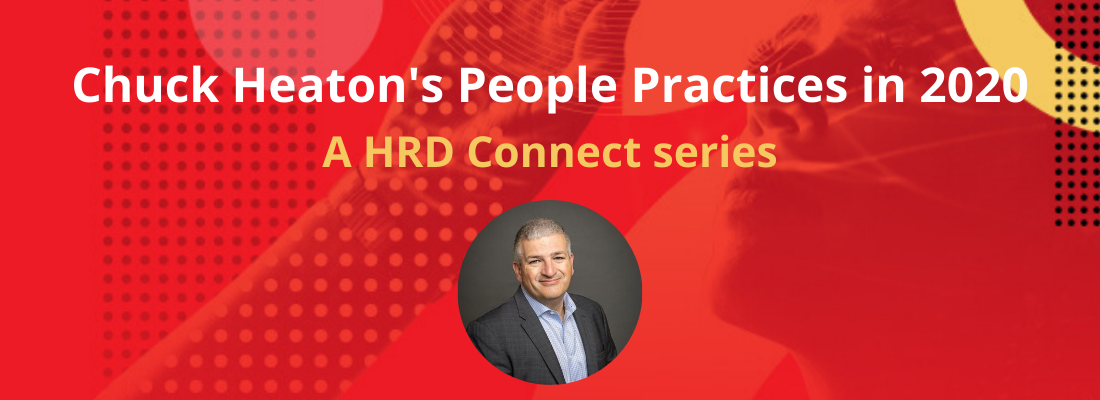People Practices Oversight: An agenda for boards of directors
- 8 Min Read
This is the first in a series of five articles recommending a new people practices agenda for Boards of Directors (BODs), by Chuck Kemper, Chuck Heaton and Jason Anderson.
- Author: Chuck Heaton
- Date published: Sep 9, 2020
- Categories

2020 has pulled back the curtain on issues that HR professionals regularly identify as areas needing improvement, but which are not the top priorities of boards of directors often enough. HR leaders know these challenges warrant more than window dressing solutions because they have value-destroying potential, and we are making the case that boards of directors can strike a balance of appropriate oversight by adjusting their purview.
Leadership pipelines: how is the organization developing people leaders for the future?
BOD’s are right to be concerned with C-suite succession but assessing the pool for those top roles is akin to reviewing lagging indicators. This cohort is in the concluding phases of the leadership development lifecycle. The leading indicators are many levels down, embedded in the processes that the managers-of-managers level (i.e. two levels up from the individual contributors) are using to elevate front-line staff to their first people leadership role.
As we heard Steven Drotter, co-author of The Leadership Pipeline, preach years ago, the most important job of the manger-of-managers level is creating the pool from which all levels of leaders will one day come. Creating that critical pool is two-fold. First, selecting those individual contributors we believe others will choose to follow and secondly, girding up those selected with some fundamentals to accelerate the followership they engender.
Selection
Failing to handpick the right front-line workers to move into line supervisory roles is so damaging; just ask anyone who has worked for someone promoted to team leader for all the wrong reasons…
She was the best electrician, technician, engineer, nurse, etc., etc.
He pursued promotion because he believed the leadership track was the only way to make more money
His sycophantic behavior paid off
…and listen to them describe the pain and suffering that ensued! How about you select them because you can see that people already choose to follow them before they have the title, they have a passion to connect with other people to accomplish something, they have demonstrable emotional intelligence indicators, they exude an authenticity which accelerates trust, they will add to the diversity of thought among your front line leaders, and their learning agility garners respect from their peers.
When we get disciplined in how these first level of leadership promotion choices are made, we gain a competitive advantage in higher-performing front-line products and services delivery and talent pools for the future.
Accelerating effectiveness
To dash some presumptions about the second step, no, we are not referring to force-fitting a perfect leadership competency set on them. The perfect model is ethereal and alignment with it cannot be measured. Rather, the building up of their leadership effectiveness is best achieved by giving them the short cut to the conclusions reached from volumes of research on the highest performing teams from the likes of the Gallup Organization, the Corporate Executive Board, Korn Ferry, and Kenexa.
We know with validity established from tens of millions of data points spanning nearly every job, industry, and country, that members of the best performing teams experiencing certain feelings as a result of the leadership they are receiving (Nine Lies About Work, HBR Press, 2019). Among these are*:
- At work, I clearly understand what is expected of me.
- I have the chance to use my strengths every day at work.
- In my work, I am always challenged to grow.
Taking these and the other top eight indicators of engagement, we can quickly inculcate a new leader with a planful approach to generating this work experience for her team. And we can do it by taking advantage of her own strengths instead of requiring a specified but unmeasurable level of proficiency in some collection of competencies.
And what about the new normal?
Creating a feeling that my manager cares about me has always been a driver of engagement, but wow, has that moved into a whole new gear in 2020. Employees have been sharply watching to see how they would be cared for through a pandemic. The ‘how’ one chooses to show care as a leader for your team has not changed, but for now the importance of doing it has risen and so the frequency of showing care must as well. This should not change who you select to lead, but the emphasis on duty of care should be part of the accelerating effectiveness steps you take.
Additionally, there is no better time to introduce concepts around unconscious bias than when someone first becomes responsible for getting a group of people to achieve powerful results. Seeing deep into your own biases and then committing to how you will relate authentically to others could not be a more timely exercise for a brand new leader of people.
Another implication of the new normal is remote workforce management. Ensuring an understanding of the best tactics for remote engagement enhancing check-ins, assignment of work, meetings, learning, mentoring etc. also need to be found in any new leader program.
A board of directors with time on its hands?
You must be thinking by now, do boards of directors really have the time to focus on the selection and development of frontline leaders just to ensure there is a pool of leaders being created for the future? Perhaps not, but what say you if this same area of oversight gave boards of directors both a leading and lagging indicator of productivity, retention, safety, customer relations, profit and shareholder return (i.e. the corollaries of employee engagement)?
These frontline leaders manage the 90% of the workforce that delivers the products and services to customers. The evidence is undeniable that sustained business prosperity is a direct result of frontline leaders who create among their teams feelings that they are cared for, connected to something bigger, and doing work that is meaningful, challenging, clearly understood, and that uses their strengths (more on this in a forthcoming article on Healthy Workplace Assessments).
So how should the BOD boil this down into a practical assurance checklist? The BOD’s people practices’ agenda will look different at the onset of probing frontline leadership selection and development processes than it will if things are up and running. Here is a suggested approach:
Assuring proper practices exist – boards of directors need to ask:
- How does the selection process work for promotions to the first line of leadership?
- What criteria are used? Specifically, is data regarding emotional intelligence, propensity to garner followers, diversity of thought and learning agility assessed?
- What comprises the required training for anyone to be promoted to a frontline leader?
- Deep understanding of engagement and its implications on organizational performance?
- Practices (styled to the individual leader’s strengths) that will be employed to maximize engagement?
- Unconscious bias work
- Remote workforce management tactics (if applicable)?
- How is the effectiveness of this training being measured?
Assuring practices are being used – BODs need to continuously ask:
- Selection of the frontline leaders – How consistently is the required process and criteria being used?
- Accelerating effectiveness – How consistently are all promoted to front line leadership being trained in the required subjects?
- What are the measurements of the training’s effectiveness telling us?
Our recommendation is that BODs start a regular rigor on these issues. They should require executive management to provide updates (dashboard) that evolves as the organization makes strides in improving its focus on front-line leadership.
In this series of articles, we are putting the forth the recommendation that boards of directors need to focus more on people practices to ensure the overall success of the organization. In this first deep dive, we took a look at the importance of front-line leadership and how boards of directors can ask the right questions on their selection as well as their ability to execute. Our next article will focus on how to conduct Healthy Workforce Assessments that will provide boards of directors with the true employee health of the organization.
Lead author:
Chuck Kemper is a SR Human Resources Consultant and a global HR Executive with over 20 years of experience leading HR Teams in multi-national companies.
Contributors:
Chuck Heaton, SPHR, SHRM-SCP is an HRD Thought Leader, SR Human Resources Consultant for Talent IQ and a global HR Executive with over 30 years of experience leading HR Teams in multi-national companies
Jason Anderson is a SR Human Resources Consultant and a global HR Executive with deep domain experience in compensation, accounting, finance and has spent the last 10 years leading HR Teams in multi-national companies.
*Copyright ADP Research Institute









